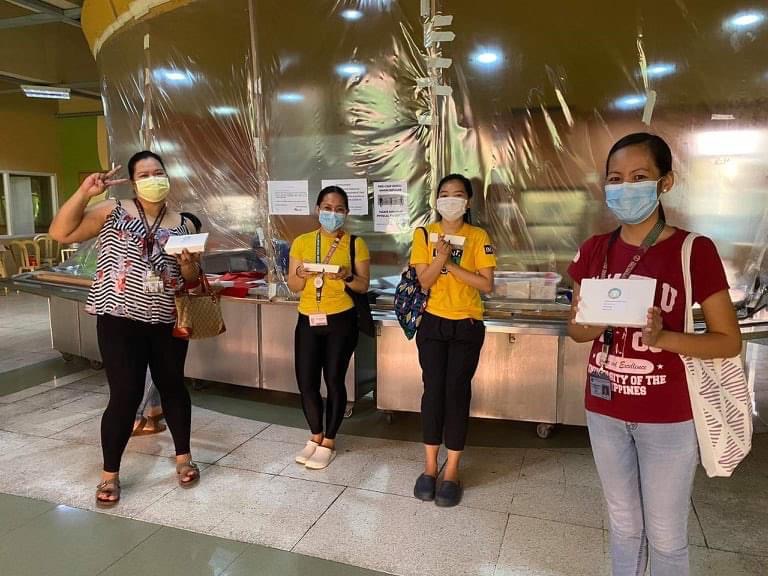The Board of Directors of Xurpas Inc. (the “Company”) sets high standards for the Company’s employees, officers, and directors. Implicit in this philosophy is the importance of sound corporate governance. To fulfill its responsibilities and to discharge its duty, the Board of Directors follows the procedures and standards that are set forth in the documents listed below. These documents are subject to modification from time to time.

- Manual on Corporate Governance
- Code of Business Conduct and Ethics
- Annual Corporate Governance Report (ACGR)
- Board Committees
- Corporate Social Responsibility
- Enterprise Risk Management
- Company Policies
Manual on Corporate Governance
Code of Business Conduct and Ethics
Our Code of Business Conduct and Ethics is a comprehensive guideline for all of our directors, officers, and employees, outlining the professional and ethical standards we uphold. Our Code covers a wide array of topics including honesty, integrity, fairness, excellence, diligence, fair dealing, insider trading, conflict of interest, corporate opportunities, use of corporate assets, confidentiality, employee relations, customer relations, public disclosure, anti-sexual harassment, compliance with laws, rules and regulations, and our whistle-blower policy. It is our commitment to provide clear guidelines and procedures for reporting and investigating any known or suspected misconduct or violation of the Code. Additionally, we emphasize our non-retaliation policy, ensuring protection for individuals who report violations in good faith.
Annual Corporate Governance Report (ACGR)
Our Integrated Annual Corporate Governance Report (i-ACGR) is prepared incompliance with the Code of Corporate Governance and SEC Memorandum Circular No. 15 (Series of 2017), which provide the framework for corporate governance reporting in the Philippines, ensuring transparency and accountability among listed companies. It mandates that companies listed on the Philippine Stock Exchange submit their i-ACGR by December 31 of agiven year by May 30 of the following year, along with other pertinent information. Our i-ACGR offers shareholders and stakeholders a comprehensive overview of our corporate governance framework, practices, and performance throughout the year. It underscores our unwavering commitment to transparency and accountability in accordance with regulatory requirements, fostering trust and confidence among our stakeholders.
Document Title
Date Filed
Board Committees
To focus on specific tasks and responsibilities, the Board adopted five (7) Board Committees, namely the Executive Committee, Audit Committee, Risk Oversight Committee, Related Party Transactions Committee and Corporate Governance Committee.
Board Committee Charters

Enterprise Risk Management
The Risk Management Policy establishes the framework and responsibilities for managing risks within Xurpas, while the Enterprise Risk Management Plan outlines the specific processes and activities to be followed in implementing the risk management framework.
The Risk Management Policy defines the tasks of the Board Risk Oversight Committee, which include developing a formal enterprise risk management plan, overseeing its implementation, evaluating its effectiveness, advising the Board on risk appetite levels and tolerance limits, and reporting material risk exposures. These tasks are further elaborated upon in the Enterprise Risk Management Plan, which provides detailed steps and activities for risk assessment, communication, remediation, monitoring, reporting, and continuous improvement. Both documents emphasize the importance of identifying, assessing, and mitigating risks to ensure the continuity of Xurpas’ operations, compliance with laws and regulations, support for business units, and the security of information and IT services. They also highlight the need for stakeholder engagement, regular communication, and the alignment of IT services with business requirements.
The Board Risk Oversight Committee provides guidance and oversight, receives reports from the CRO, and provides guidance and direction for risk management activities.
The Chief Risk Officer (CRO) provides guidance and oversight, determines methods and frequency for tracking risk status, re-evaluates and modifies risk items, analyzes and adds new risk items to the Risk Register, regenerates the Risk Register, and escalates risk factors if necessary.
The Risk Owner leads specific activities related to risk assessment, risk remediation, developing contingency plans, and stakeholder engagement. They also report the status and effectiveness of mitigation actions to the CRO every two weeks and participate in the re-evaluation and modification of risk items and the analysis and addition of new risk items to the Risk Register.
The Risk Assigned Person assists the Risk Owner in various tasks, including day-to-day monitoring of risks and participating in the reporting of mitigation actions to the CRO. They also participate in the re-evaluation and modification of risk items and the analysis and addition of new risk items to the Risk Register.












